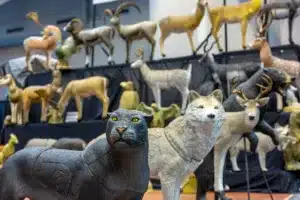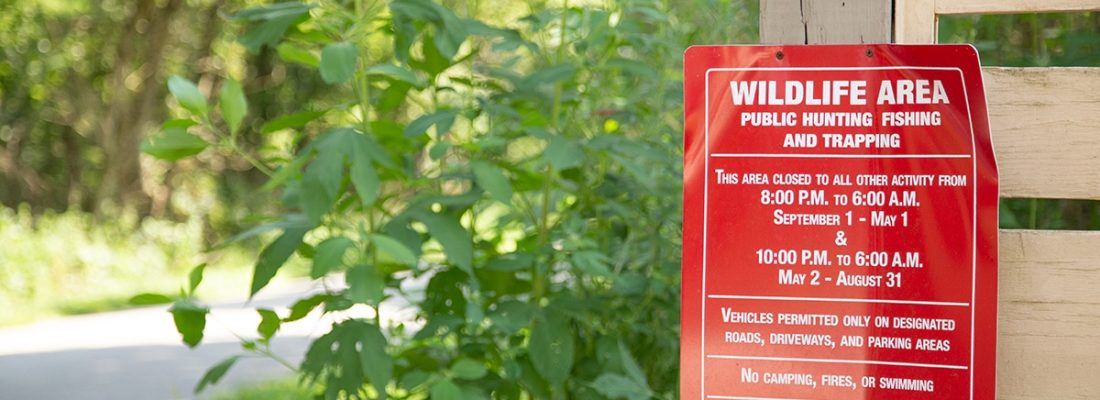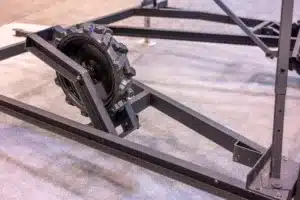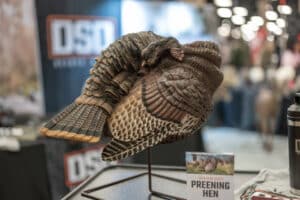No products in the cart.

365 Archery 3D Archery Targets
When folks enter a new industry, or even a new subsection of their industry, they usually dip their toe in by offering one or two

Blog / Field Updates / Public Land Hunting and Strategy – Part 1

Killing a mature whitetail is no easy task. As they grow past their adolescent years, reaching 4, 5, even 6 years old, it seems as if a whitetail’s senses become so heightened that they almost develop the ability to detect a hunter the minute they walk into the woods. Yet, we all know one or two lucky hunters who seem to be successful year after year. But is it really luck? What about the brave few who find success after spending their entire fall focused on public land hunting? Is there something they are doing, or something they know that allows them to be more successful than the majority of hunters? It is a tough question to answer, but I believe the answer is more straight forward than many would believe.
To begin, let’s talk about the difficulties one might face should they decide to hunt public property. There are many factors that could impact your hunt, but there are three primary concerns that come to mind. In no particular order: a lack of concentrated food sources, difficult access, and hunting pressure. Let’s break down each factor and talk about ways to mitigate their effect on your next hunt.
One of the more common hunting tactics used today is to ambush deer over a food source. “Food plots” as we like to call them, are seldom found on public hunting lands. Clover occurs naturally in some instances, but it not nearly as abundant or focused as many hunters would like. Standing crops, such as corn and soybeans are occasionally planted on public land but typically harvested before they become effective as a late season draw. Finding food sources on public property requires a little more effort, but anyone willing to spend the time looking will find that a variety of native food sources which can be just as effective.
Acorns, forbs, and browse such as Osage orange leaves all have the ability to draw deer at the right time of year. These food sources are no different than the food plots we typically hunt if they are hunted correctly. Finding active food sources in the fall is all about knowing what the deer like at any given period. These food sources can increase your odds of an encounter exponentially once they are located. Also remember that it is important to consider how deer will approach them when placing your stand.
Access to any hunting location must be approached with care to avoid alerting deer to your presence. Whether we are talking public or private land, it makes no difference. Many public land hunters have a tendency to “think alike”, thus accessing a given property much the same. Deer become used to this access and tend to bed in areas where they can observe hunter’s comings and goings. A lot of people make the mistake of assuming they are making less of an impact by utilizing the same trails as others, but the fact of the matter is that public land sometimes requires you to think outside the box. Whether this means seeking permission to cross private property to access a particular location or utilizing a boat/canoe to cross a body of water, it is often the person who is able to adapt that stands the best chance at success.
Pre-season and in-season scouting are perhaps two of the best tools at your disposal for planning your access. Public land hunting usually requires hunters to get closer to deer than they typically would on private land. Knowing exactly where a deer might be bedded can make the difference in success or failure. Occasionally bumping a buck from its bed can give you valuable insight into how you should set up. I will caution you however, this is not something you want to do with regularity. Some will say bumping a buck even a single time is too much, but keep in mind that on public land this is somewhat a common occurrence. Big bucks have a tendency to find bedding locations with minimal hunter intrusion, but human contact on public ground as a whole is unavoidable.
One thing public land whitetails are used to is pressure. This is perhaps the most difficult part of hunting public land deer. Common hunting locations such as food sources and travel corridors between food and bedding tend to be magnets to other hunters. Deer typically take the path of least resistance between such locations. However, they quickly become used to human contact as seasons progress. When this happens, they begin taking large detours to get from point A to point B. In other cases, deer begin moving closer to sunset and sunrise. In this case, you can actually take advantage of hunter pressure by setting up one ridge over, or maybe on the opposite side of, a thicket deer use as a transition. Many times, deer will simply slip around an area they frequently encounter humans. Thus providing you an optimal opportunity to ambush an unsuspecting deer.
Even with the best plans in place, hunting public land deer can be extremely challenging. The best thing you can do is be prepared to adapt and improvise. Mobility is your friend on public land, and the best way to figure out what deer are doing on public land is to put boots on the ground and figure it out.
Leading up to and during my 2019 public land hunting journey, I will be going in much more detail about these three topics (food sources, access, and pressure), as well as breaking down the products and public land strategies I plan to use in search of a mature Ohio whitetail. With any luck, this series will culminate with some epic trophy pics and an awesome story.

When folks enter a new industry, or even a new subsection of their industry, they usually dip their toe in by offering one or two

Highlights of Greylight’s new releases for 2024 – the Daybreak Blind, Transformer Tower, and Nomad trailer.

With one of their coolest decoys to date, the NWTF floor was buzzing with talk of the new DSD Preening Hen decoy. It’s almost TOO
Don’t miss a thing! Subscribe below to keep informed on everything that’s happening with the folks at SELFILMED.com